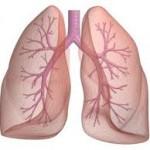Disclaimer: This article is a summary of Research article by Liao et al., Pre-print published on medRxiv. This research article at the time of writing this summary has not been peer-reviewed.
As of 7th March 2020, over 100,000 COVID-19 cases were reported, with approximately 4000 deaths thus far. Symptoms of COVID-19 vary from modest, mild to severe: acute respiratory distress syndrome (ARDS). ARDS is a type of respiratory failure associated with widespread inflammation mediated by dysregulation of cytokine production. A recent study by Liao et al., “comprehensively characterised the lung immune microenvironment of bronchoalveolar lavage fluid (BALF) from 3 severe and 3 mild COVID-19 patients and 8 previously reported healthy lung controls through single-cell RNA sequence combined with TCR-sequencing” [Pre-print published on medRxiv].
Despite the low sample size, Liao et al., observed increased immune cell recruitment in COVID-19 patients compared to controls. Severity of disease greatly affected the cellular composition of BAL-samples, where mild disease was associated with higher proportions of natural killer (NK) and CD8 T cells but lower levels of macrophage recruitment than severe disease. In addition to detecting more T cells in BALF from patients with mild-disease, researchers also detected increased clonal expansion in mild disease compared severe-disease. Further CD8 T cells detected expressed high transcriptomic levels of cytotoxic molecules, suggesting a crucial role of cytotoxic T cells in immunity and clearance of SARS-CoV2.
Clinical studies and animal models of SARS and MERS have demonstrated “higher levels of inflammatory cytokines, chemokines and interferon-stimulated genes associated with disease severity”. Responses potentially attributed to high levels of macrophage infiltration during disease. Liao et al., showed that severe COVID-19 is associated with higher proportions of inflammatory (FCN1+ and SPP1+) macrophages but very low proportions of FABP4+ alveolar macrophages compared to mild disease. FCN1+ macrophages “express higher levels of interferon genes and multiple chemokines” and could be responsible for hyper-inflammation observed in severe-COVID-19. Researchers reported that loss of FABP4+ AMs -a predominant macrophage population in controls and mild-COVID-19 patients- “likely contributed to the failed lung functions” in patients with severe disease.
In summary, this is the first reported study on the cellular atlas of lung broncho-alveolar immune microenvironment in COVID-19 patients. Results presented by Liao et al., “unveiled potential immune mechanisms underlying disease progression and protection in COVID-19 patients.”
Journal Article: Liao et al., 2020. The landscape of lung bronchoalveolar immune cells in COVID-19 revealed by single-cell RNA sequencing.
